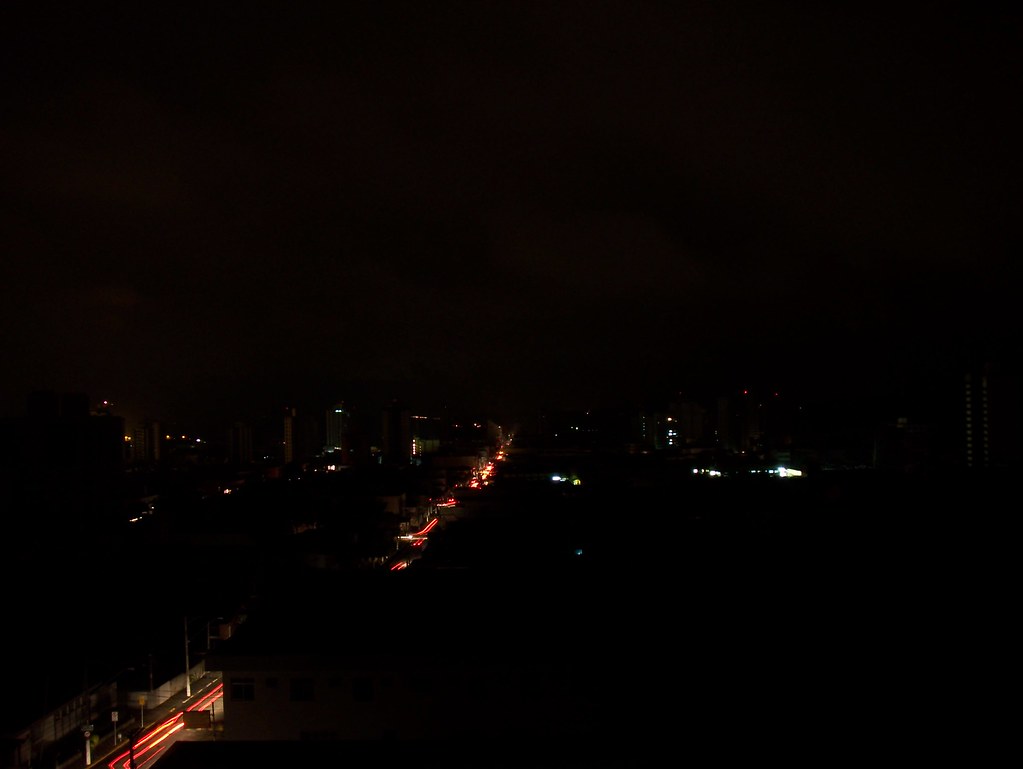Electricity and heat are ubiquitous, necessary for life, especially for a dignified one. There are many reasons why we could lose them and experience a blackout, those include breakdowns, natural disasters or a war. Is Poland prepared for this? Does it have the right regulations, solutions and resources? – asks Marcin Karwowski, editor at BiznesAlert.pl.
Many see a blackout as the background plot of a science fiction novel or a disaster movie, but it is a real threat, especially on a local scale. The flood in Zgorzelec and Bogatynia in 2010, and a similar disaster in Kłodzko are good examples. Power outages can also occur due to a storm or in the winter. The last few years have been warm, but that doesn’t mean it will always be so. The situation in Ukraine shows that the scenario of a war in Europe is still possible, and the enemy may target the infrastructure. An interruption in the power supply that lasts an hour or two is a minor inconvenience, even the refrigerator will not thaw. However, a day is a problem. Electricity is not only a convenience, it powers our work tools such as phones or laptops, provides communication with the world and makes it possible to prepare food. Without electricity, hospitals, which in theory should be equipped with generators, will not be able to function properly. The generators should be working and have a fuel reserve, but that’s just theory. In the event of a crisis such as a lack of energy, the entire crisis management system is put into action, but in Poland that system is not very robust.
Crisis management depends on the law
Like all organized endeavors, crisis management has its legal basis, in this case it is the Law on Crisis Management of 26 April 2007. This law has been updated over the years. It says:
„Crisis management is the activity of public authorities as part of the management of national security, which consists in preventing crisis situations, preparing to take control of them through planned actions, responding to crisis situations, removing their consequences and restoring critical resources and infrastructure.”
The public administration is responsible for resolving crisis situations, some of which involve power shortages. The military, including the Territorial Defense Army, is supposed to support civilians, but the handling of a crisis situation (not to be confused with a state of emergency) is not their responsibility. To understand the context, it is worth looking at the definition of a crisis situation, which we will find in the third article. It refers to an event that adversely affects the safety of people, property of considerable size or the environment. At the same time, it significantly limits the capabilities of public administration due to inadequate availability of forces and resources.
This means that a power outage that can be repaired with ordinary resources in a short time is not a crisis situation, but a flood that cuts off an entire city for many days is. Of course, combating the effects of floods is not only about restoring energy supplies, the problem is multi-layered. It is necessary to take care of the health and life of the inhabitants, to drain the area, to unblock the roads and to protect the residents from crimes such as looting.
How is the state supposed to behave then? This is determined by the National Crisis Management Plan and its equivalents created at the provincial, county and municipal levels. They identify the most likely threats and outline the procedures to be implemented. These plans must be constantly updated and cannot be more than two years old. The main body responsible for crisis management is the Government Security Centre and, at lower administrative levels, its subordinate administrative bodies. The opinion-giving and advisory body for the government is the government’s Crisis Management Team, consisting of the prime minister and the ministers specified in the law.
Organizational cells dealing with crisis management are not left to themselves, they can request the use of forces and means of the Armed Forces, Police, Border Guard or State Fire Service. In certain cases, such as a terrorist attack, they cooperate with the head of the Internal Security Agency.
So far so good, right? We have regulations, proper structures… but there are not enough resources.
Poor crisis management
Article 26 of the Law on Crisis Management states that local governments should spend half a percent of their budget for the implementation of crisis management. In addition, this amount is reduced by investment expenses, salaries, derivatives and debt servicing. The remaining amount is to include preparation in case of a crisis situation, which, by its definition, threatens the security and functioning of the state. So this is about being ready for a whole range of scenarios that require different reactions. Floods, storms, power outages, terrorist incidents, chemical spills (e.g. due to derailment), etc.
The budget is too small, so the cells responsible for crisis management, instead of collecting ready-to-use funds, often collect procedures for their use. In the event of a threat, they can then acquire the money, this is in some way an effective method, but in the case of the most urgent threats the effectiveness is lost. Individual administrative levels can also receive subsidies from the state budget, but again, this prolongs the reaction time and we are talking about a situation that threatens the health and life of people – the most important values.
If this is not concerning enough, one needs to ask themselves a question. Do we know where the nearest shelters are? A large part of them are in a deplorable state, which the industry media have repeatedly sounded off about. Are we familiar with emergency signals? The maintenance of civil defense structures and the proper response to crisis situations is on the side of the state, but knowing where to go, whose orders to wait for and how they are communicated is a matter of public awareness. This is also worth taking care of on one’s own.
How to deal with a blackout?
How dangerous a power outage is and how difficult it is to deal with a full-fledged blackout is visible in Ukraine. In the winter of 2022 Russia used missile attacks to deliberately interrupt the supply of electricity and heat. The Center for Eastern Studies quoted Ukrainian President Volodymyr Zelensky as saying that at the beginning of November last year, almost 4.5 million customers were disconnected from power. It was necessary to use portable energy sources, for which the state did not have adequate resources, hence international assistance was sought. One such aid campaign was called Generators of Hope and it was carried out by Eurocities. However, it must be remembered that portable energy sources are not designed to work constantly, they also require fuel supply and cannot be used in all conditions (proper ventilation in the room is crucial, among other things). Ukraine did not have its own production of generators, most of them were imported from Poland, France, Germany and China. At the same time, there were accidents including fires and explosions.
There were also long interruptions in heat supply. Ukraine appealed for help, and in households portable heaters have become the most desirable commodity. Starlink provided communication, and without this solution even more people and institutions would be cut off.
We know how dangerous power outages are. Poland should be ready, so that the adage „a Pole is wise after the event” can finally become obsolete.









